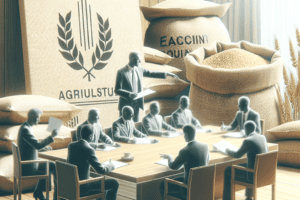Grain transportation in remote areas presents a unique set of challenges that can significantly impact agricultural productivity and food security. The logistics of moving grains from farms to markets or processing facilities are often complicated by geographical barriers, inadequate infrastructure, and economic constraints. This article delves into the various challenges faced in the transportation of grains in remote regions, exploring the implications for farmers, the economy, and the environment.
Understanding the Landscape of Grain Transportation
The transportation of grains is a critical component of the agricultural supply chain. In remote areas, this process is often hindered by a variety of factors that can lead to inefficiencies and increased costs. Understanding these challenges requires a closer look at the geographical, infrastructural, and economic contexts in which grain transportation occurs.
Geographical Barriers
Remote areas are often characterized by difficult terrain, which can complicate transportation efforts. Mountains, rivers, and dense forests can create natural obstacles that limit access to markets. In many cases, the distance between farms and processing facilities is significant, leading to longer transportation times and increased costs. Additionally, seasonal weather conditions can further exacerbate these challenges. For instance, heavy rains can lead to flooding, making roads impassable, while winter snow can block routes entirely.
Inadequate Infrastructure
Infrastructure plays a crucial role in the efficiency of grain transportation. In many remote areas, roads, railways, and ports may be underdeveloped or poorly maintained. This lack of infrastructure can lead to delays in transportation, increased vehicle wear and tear, and higher fuel consumption. Furthermore, the absence of storage facilities can result in post-harvest losses, as farmers may be unable to transport their grains in a timely manner. The need for investment in infrastructure is paramount to improving the transportation of grains in these regions.
Economic Constraints
The economic viability of grain transportation in remote areas is often challenged by high costs. Farmers may face significant expenses related to fuel, vehicle maintenance, and labor. Additionally, the limited market access can lead to lower prices for their products, making it difficult for farmers to cover transportation costs. In some cases, the lack of competition among transport providers can result in inflated prices, further straining the financial resources of farmers. Addressing these economic challenges is essential for ensuring that grain transportation remains sustainable and efficient.
Innovative Solutions to Overcome Transportation Challenges
Despite the numerous challenges associated with grain transportation in remote areas, there are innovative solutions that can help mitigate these issues. By leveraging technology, improving infrastructure, and fostering collaboration among stakeholders, it is possible to enhance the efficiency of grain transportation and support agricultural development.
Utilizing Technology
Technology has the potential to revolutionize grain transportation in remote areas. For instance, the use of GPS and mapping software can help farmers and transporters identify the most efficient routes, reducing travel time and costs. Additionally, mobile applications can facilitate communication between farmers and transport providers, allowing for better coordination and scheduling. Drones and automated vehicles are also emerging as potential solutions for transporting grains in hard-to-reach areas, offering a more flexible and efficient means of delivery.
Investing in Infrastructure
Investment in infrastructure is crucial for improving grain transportation in remote areas. Governments and private entities can work together to develop and maintain roads, railways, and storage facilities that are essential for efficient transportation. Public-private partnerships can be particularly effective in mobilizing resources and expertise to address infrastructure gaps. Furthermore, enhancing access to reliable transportation services can help farmers reach markets more effectively, ultimately leading to increased profitability and food security.
Fostering Collaboration
Collaboration among various stakeholders is vital for addressing the challenges of grain transportation. Farmers, transport providers, government agencies, and non-governmental organizations can work together to identify common goals and develop strategies to improve transportation systems. By sharing knowledge and resources, stakeholders can create a more resilient agricultural supply chain that benefits all parties involved. Additionally, community-based initiatives can empower local farmers to take an active role in improving transportation logistics, fostering a sense of ownership and responsibility.
Conclusion
Grain transportation challenges in remote areas are multifaceted and require a comprehensive approach to address effectively. By understanding the geographical, infrastructural, and economic factors at play, stakeholders can develop targeted solutions that enhance the efficiency of grain transportation. Embracing technology, investing in infrastructure, and fostering collaboration among stakeholders are essential steps toward overcoming these challenges. Ultimately, improving grain transportation in remote areas is not only crucial for the success of farmers but also for ensuring food security and promoting sustainable agricultural practices.













